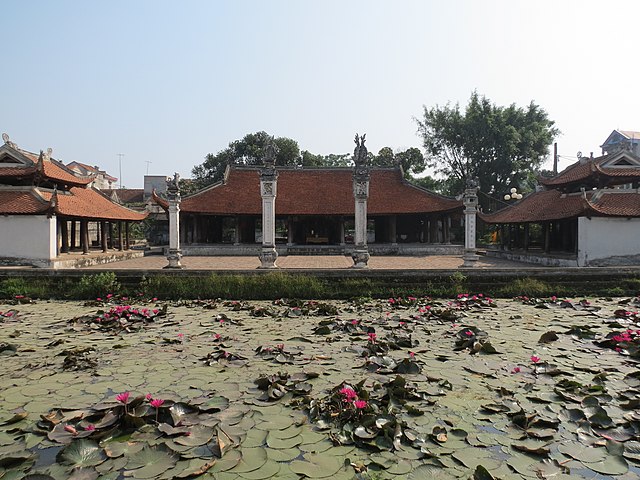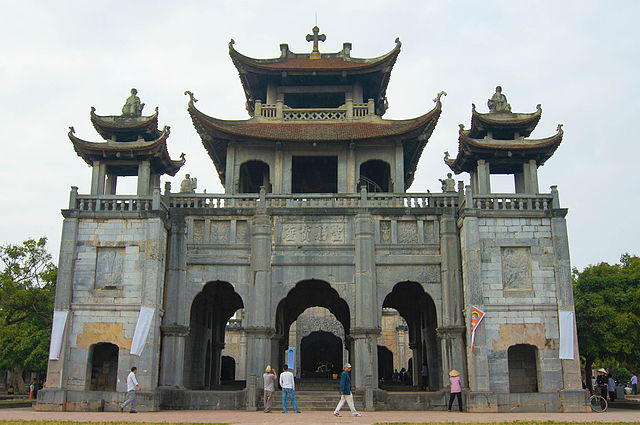The majority of Vietnamese do not follow any organized religion, instead participating in one or more practices of folk religions, such as venerating ancestors, or praying to deities, especially during Tết and other festivals. Folk religions were founded on endemic cultural beliefs that were historically affected by Confucianism and Taoism from ancient China, as well as by various strands of Buddhism. These three teachings or tam giáo were later joined by Christianity which has become a significant presence. Vietnam is also home of two indigenous religions: syncretic Caodaism and quasi-Buddhist Hoahaoism.
Gautama Buddha at Long Sơn Temple, Nha Trang.
A Đình in northern Vietnam.
Đạo Mẫu's Lên đồng shamanic ritual.
Sóc Temple in Sóc Sơn, Hanoi. Place to worship the god Thánh Gióng
Catholic Church in Vietnam
The Catholic Church in Vietnam is part of the worldwide Catholic Church, under the spiritual leadership of bishops in Vietnam who are in communion with the Pope in Rome. Vietnam has the fifth largest Catholic population in Asia, after the Philippines, India, China and Indonesia. There are about 7 million Catholics in Vietnam, representing 7.4% of the total population. There are 27 dioceses with 2,228 parishes and 2,668 priests. The main liturgical rites employed in Vietnam are those of the Latin Church.
Image: Phat Diem Cathedral (font)
Image: Cathedrale Bui Chu, Nam Dinh
Image: St. Joseph's Cathedral Hanoi, Vietnam
Image: Basílica de Nuestra Señora, Ciudad Ho Chi Minh, Vietnam, 2013 08 14, DD 07








